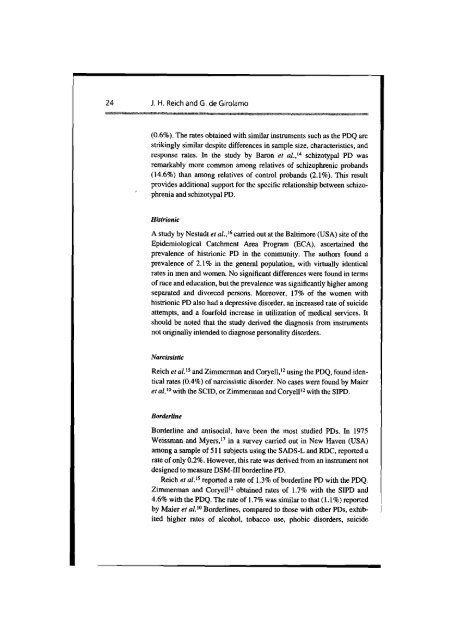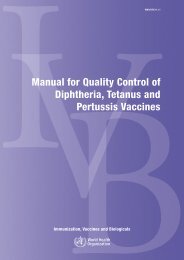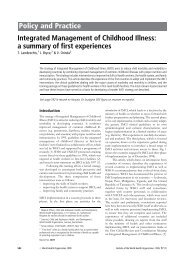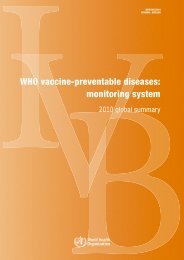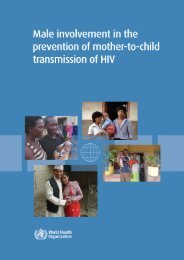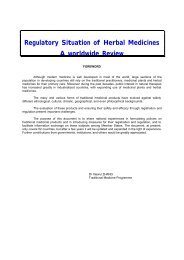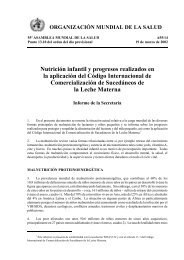IPDE - Extranet Systems - World Health Organization
IPDE - Extranet Systems - World Health Organization
IPDE - Extranet Systems - World Health Organization
You also want an ePaper? Increase the reach of your titles
YUMPU automatically turns print PDFs into web optimized ePapers that Google loves.
24 1. H. Reich and G. de Girolamo<br />
(0.6%). The rates obtained with similar insmments such as the PDQ are<br />
strikingly similar despite differences in sample size, characteristics, and<br />
response rates. In the study by Baron et al.,I4 scbizotypal PD was<br />
remarkably more common among relatives of schizophrenic probands<br />
(14.6%) than among relatives of control probands (2.1%). This result<br />
provides additional support for the specific relationship between schizophrenia<br />
and schizotypal PD.<br />
Histrionic<br />
A study by Nestadt et a1.,I6 carried out at the Baltimore (USA) site of the<br />
Epidemiological Catchment Area Program (ECA), ascertained the<br />
prevalence of histrionic PD in the community. The authors found a<br />
prevalence of 2.1% in the general population, with virtually identical<br />
rates in men and women. No significant differences were found in terms<br />
of race and education, but the prevalence was significantly higher among<br />
separated and divorced persons. Moreover, 17% of the women with<br />
histrionic PD also had a depressive disorder, an increased rate of suicide<br />
attempts, and a fourfold increase in utilization of medical services. It<br />
should be noted that the study derived the diagnosis from instruments<br />
not originally intended to diagnose personality disorders.<br />
Reich et a1.l5 and Zimmerman and C~ryell,'~ using the PDQ, found identical<br />
rates (0.4%) of narcissistic disorder. No cases were found by Maier<br />
et al.'O with the SCID, or Zimmerman and Coryell12 with the SIPD.<br />
Borderline<br />
Borderline and antisocial, have been the most studied PDs. In 1975<br />
Weissman and Myers,17 in a survey carried out in New Haven (USA)<br />
among a sample of 51 1 subjects using the SADS-L and RDC, reported a<br />
rate of only 0.2%. However, this rate was derived from an instrument not<br />
designed to measure DSM-I11 borderline PD.<br />
Reich et al.ls reported a rate of 1.3% of borderline PD with the PDQ.<br />
Zimmennan and Coryelllz obtained rates of 1.7% with the SIPD and<br />
4.6% with the PDQ. The rate of 1.7% was similar to that (1.1%) reported<br />
by Maier et al.1° Borderlines, compared to those with other PDs, exhibited<br />
higher rates of alcohol, tobacco use, phobic disorders, suicide


